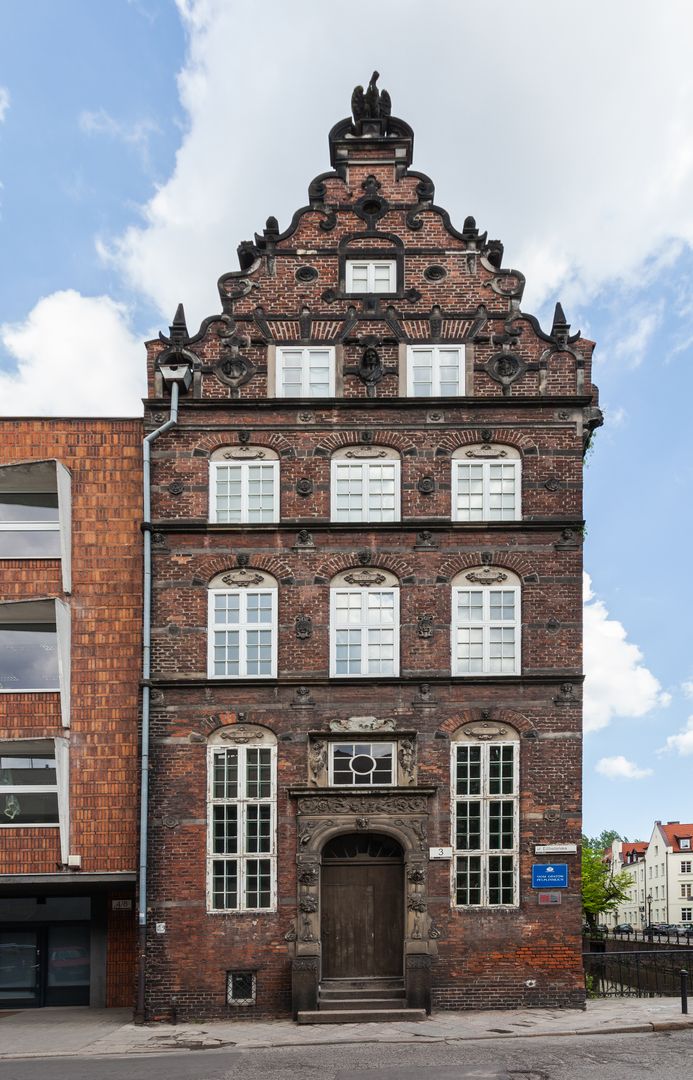The Abbots' Palace of Pelplin in Gdańsk
6.57

Overview
The Dom Opatów Pelplińskich (Abbots' House of Pelplin) in Gdańsk is a unique monument of the Old Town, built in the style of Dutch Renaissance at the beginning of the 17th century, presumably in 1612, possibly designed by Abraham van den Blocke. From 1686, the townhouse belonged to the Cistercian abbey in Pelplin, which used it as an inn until the abbey's dissolution in 1823. In 1912, the building was purchased by the city, which carried out a thorough renovation while preserving many original elements. The Abbots' House survived World War II, making it one of the few preserved buildings from that period. Architecturally, the building features a richly decorated facade where interesting stone elements are combined with brickwork. The gable of the building draws attention with its decorative network of stone bands, obelisks, and pine cones, as well as an eagle added in 1912. In the lower part of the gable, three sculptures are placed, while the cornices between the floors are supported by carved busts. The interior has partially retained its original decor, including a beautiful staircase balustrade depicting the scene of Susanna and the Elders. Today, the Dom Opatów Pelplińskich is the seat of the Institute of Art History at the University of Gdańsk, but its rooms are also used by students from other faculties. Interestingly, one of the rooms, number 116, is named after the renowned art history professor Konstanty Kalinowski, highlighting the cultural value of this place. This ensemble not only serves as an example of Renaissance architecture but also plays an important educational role, connecting history with the present.
Location
2025 Wizytor | All Rights Reserved